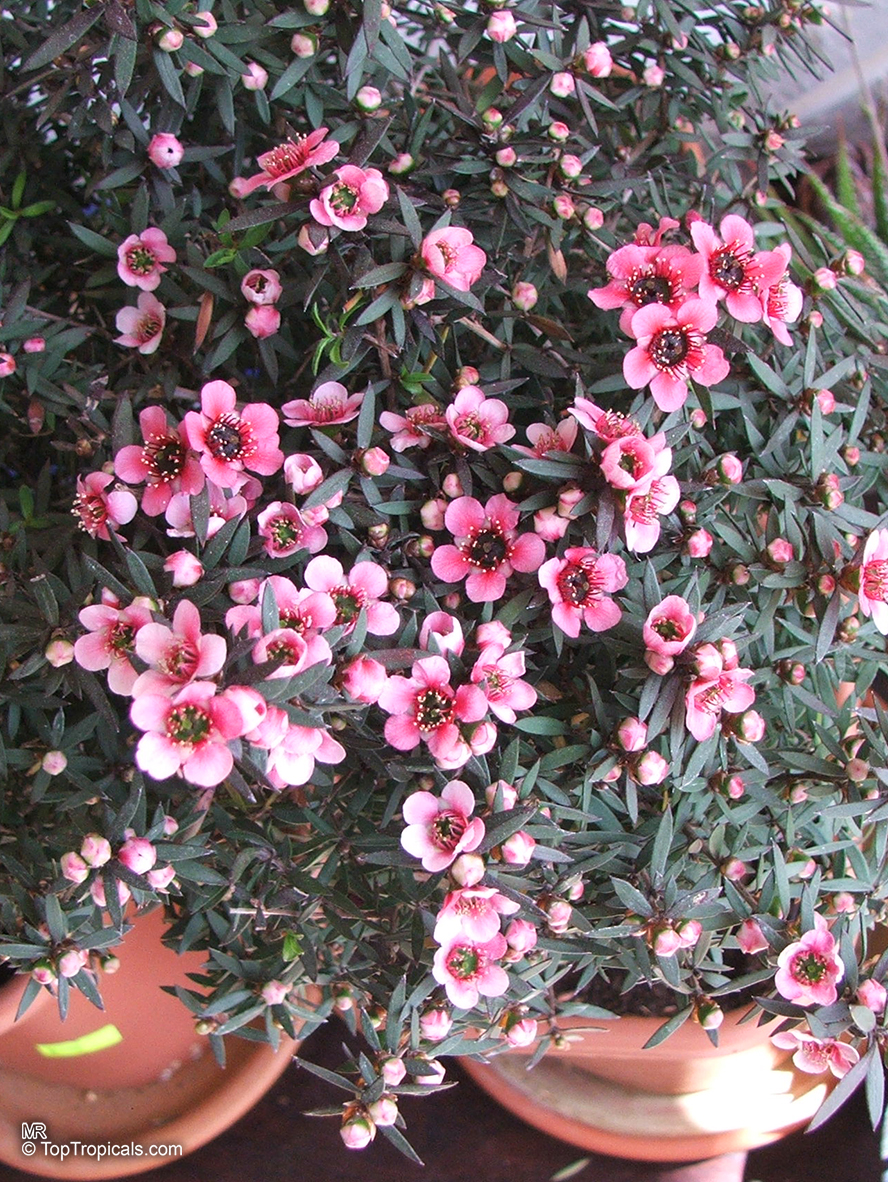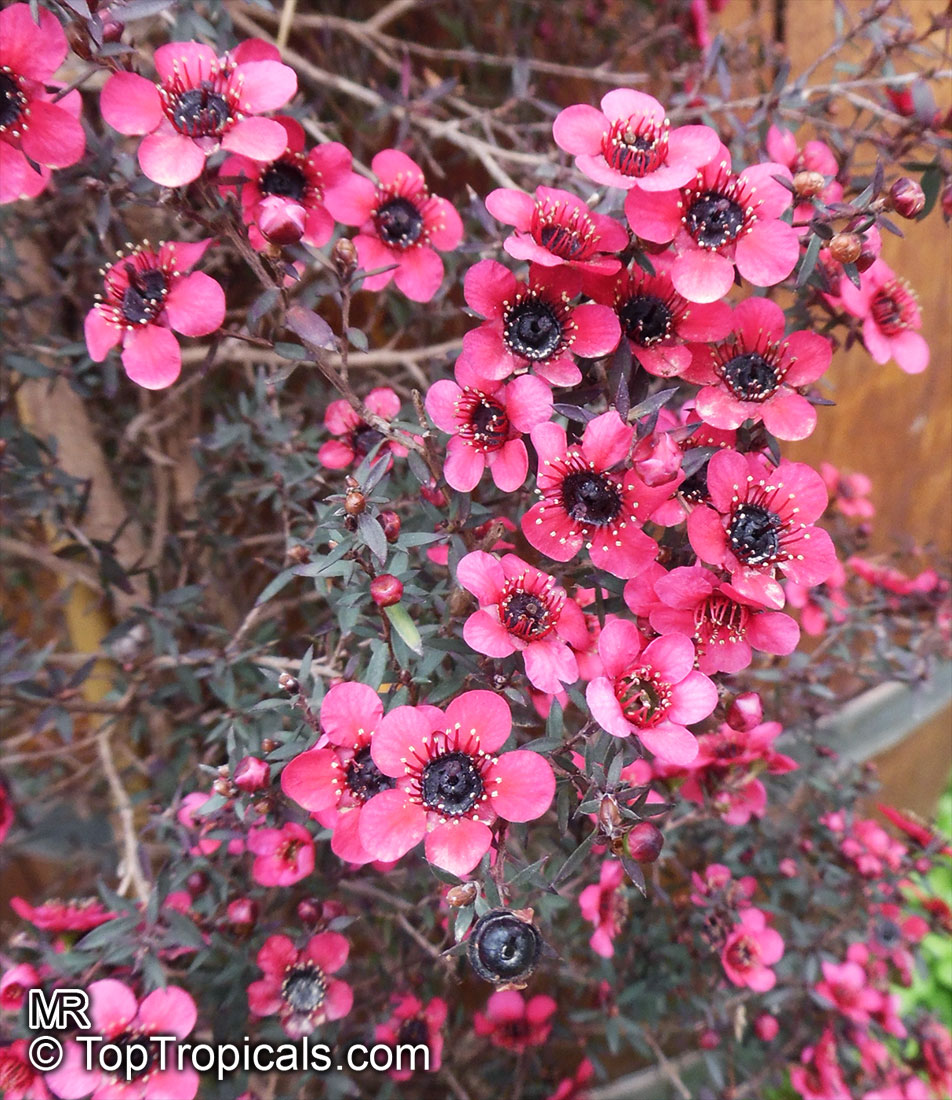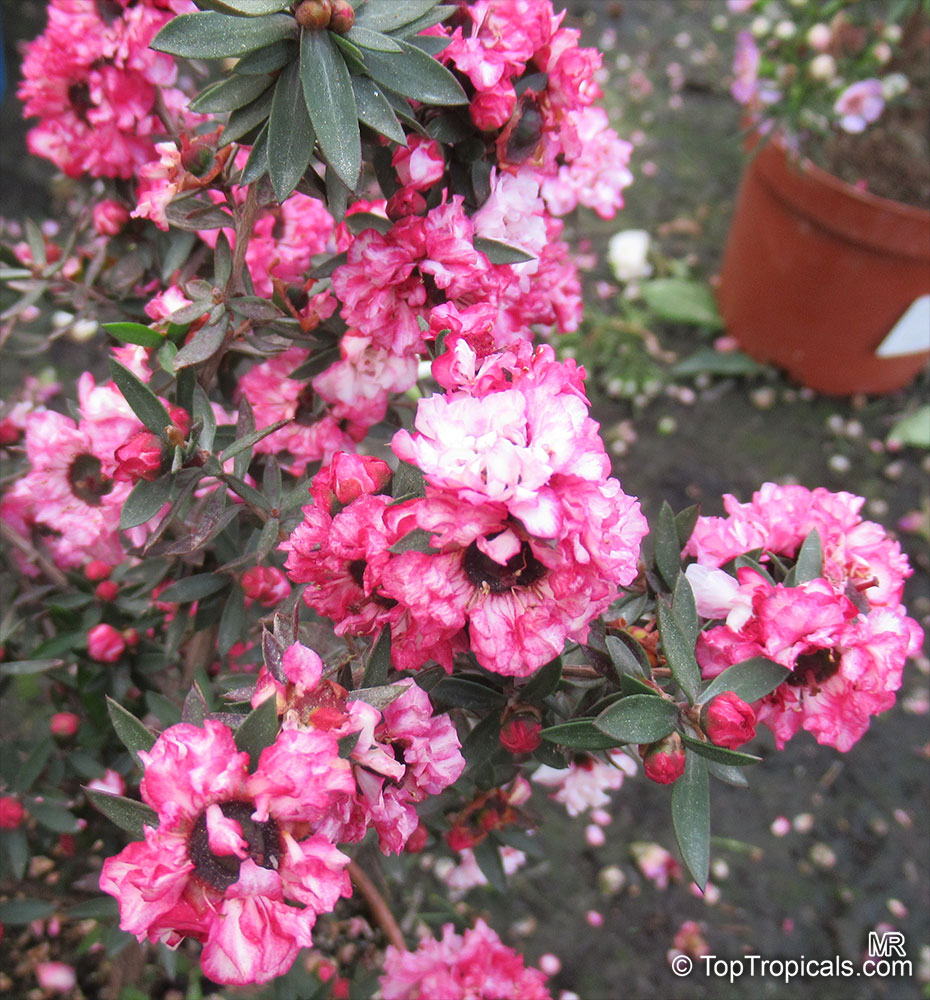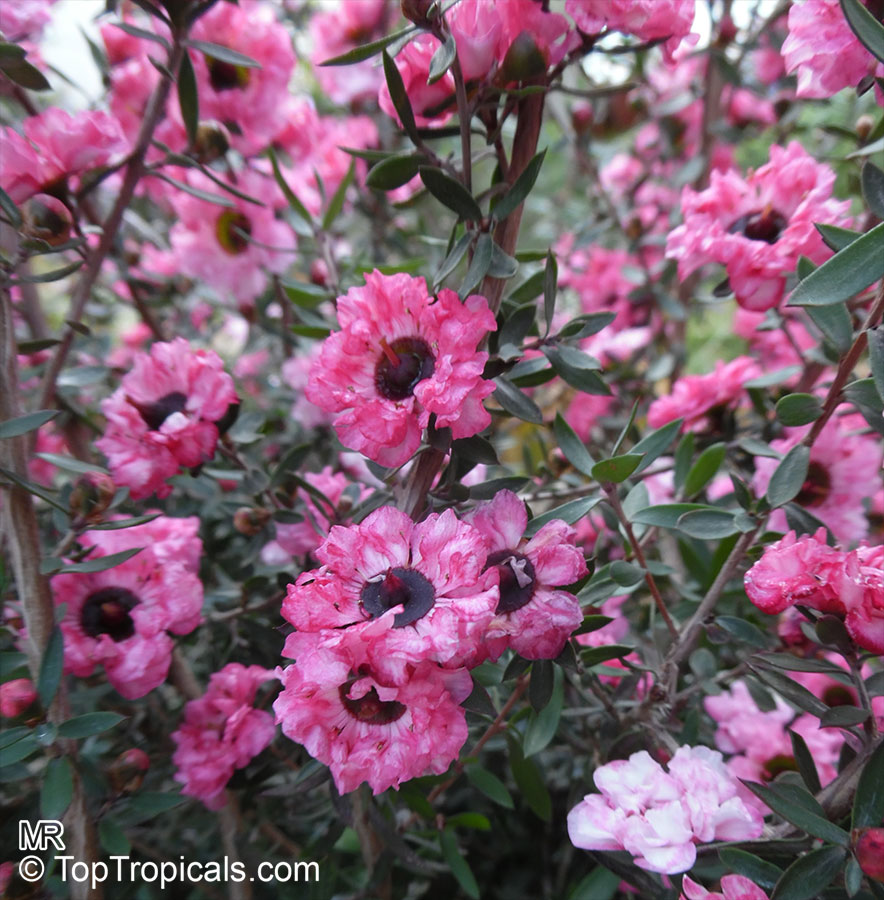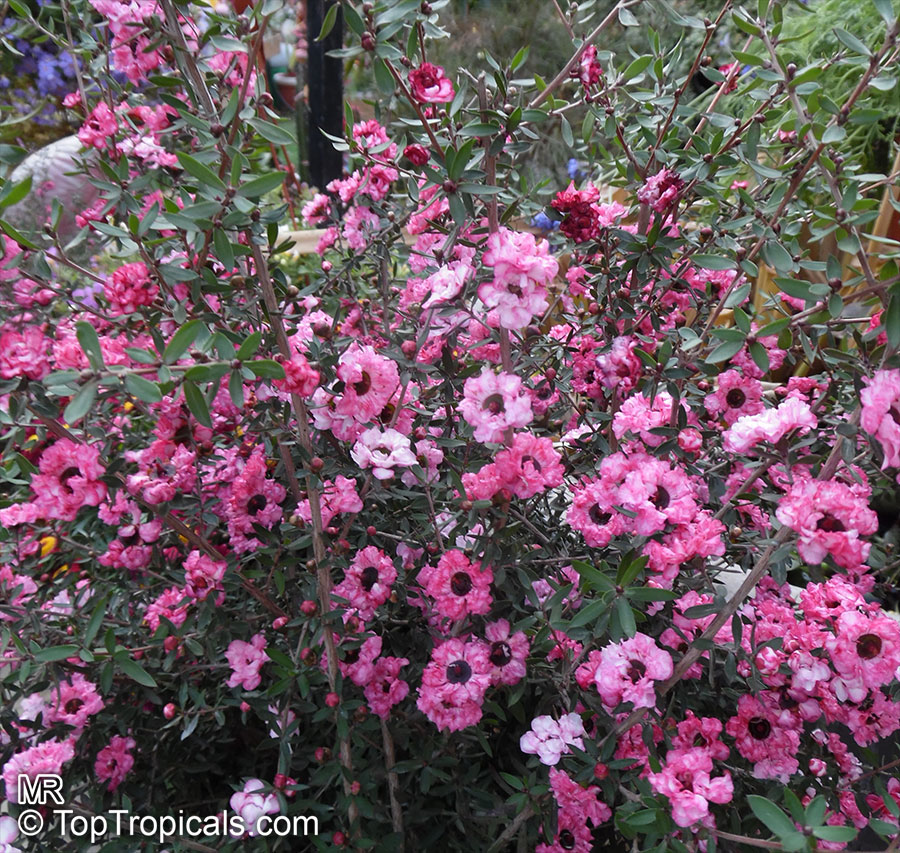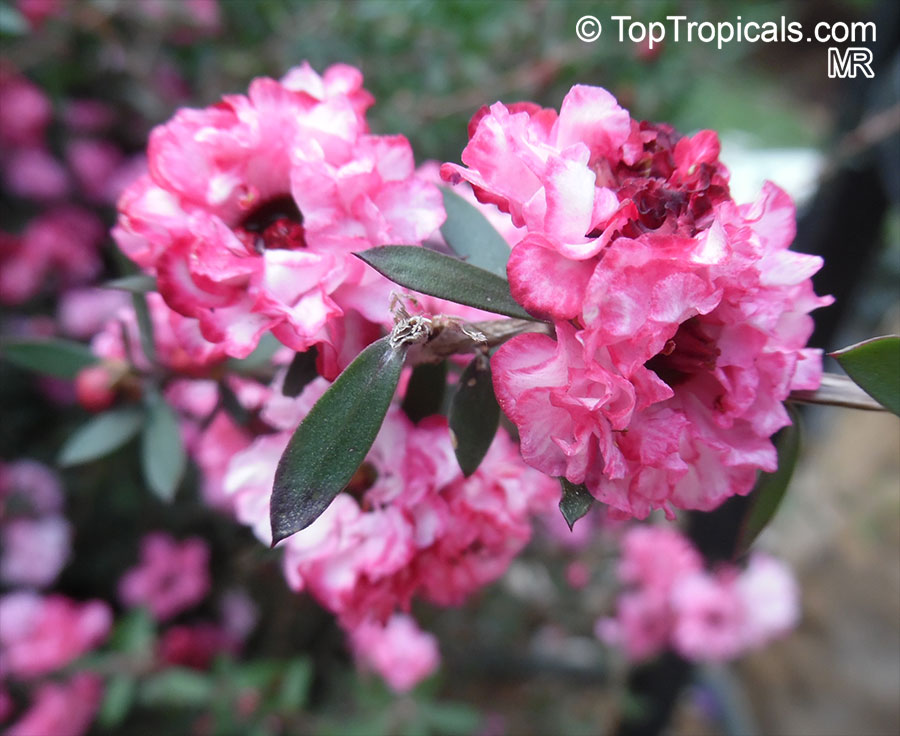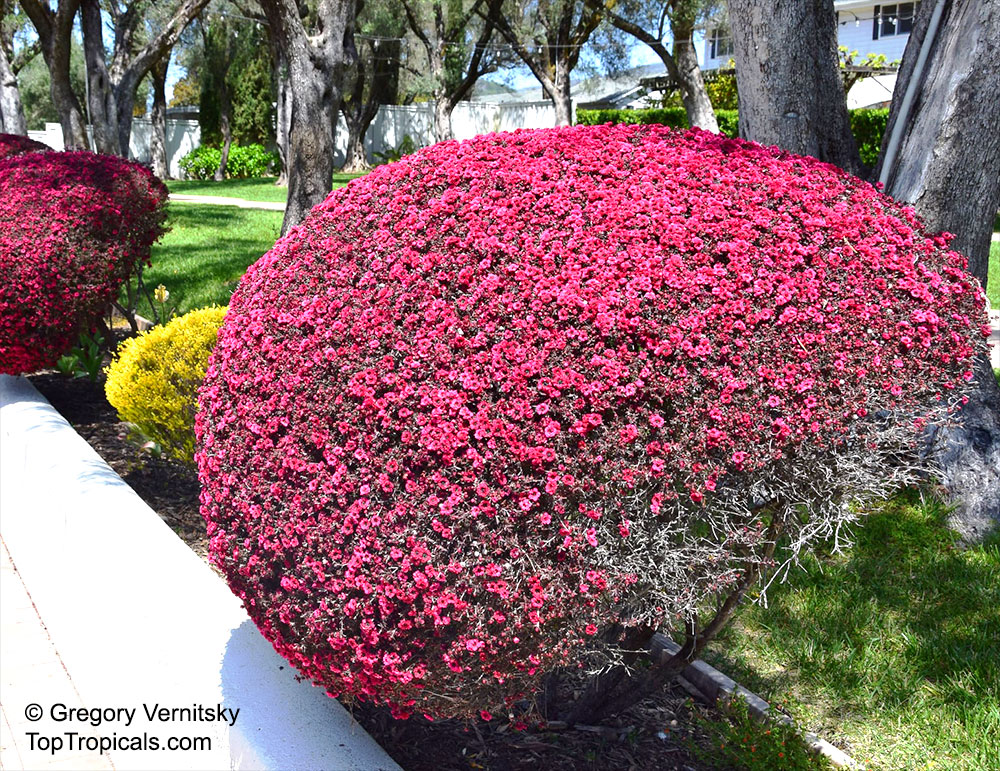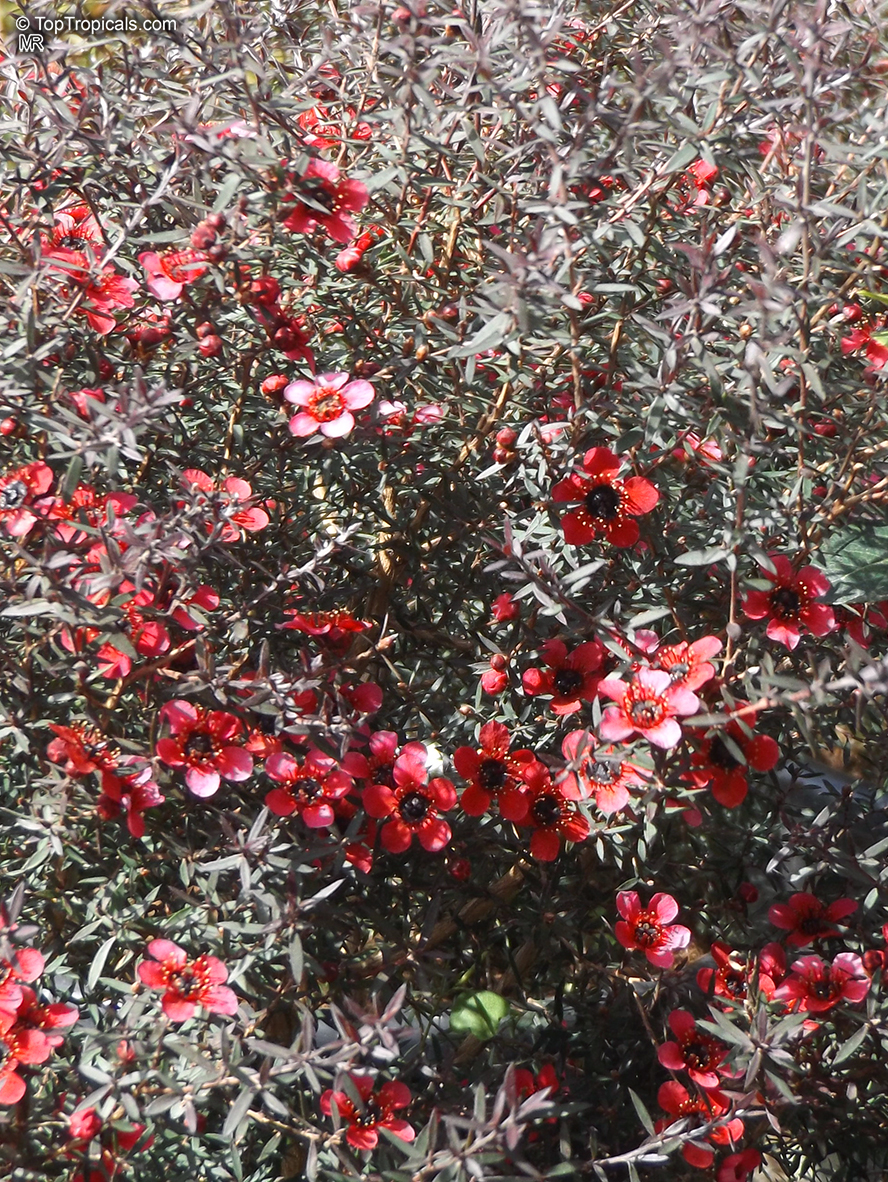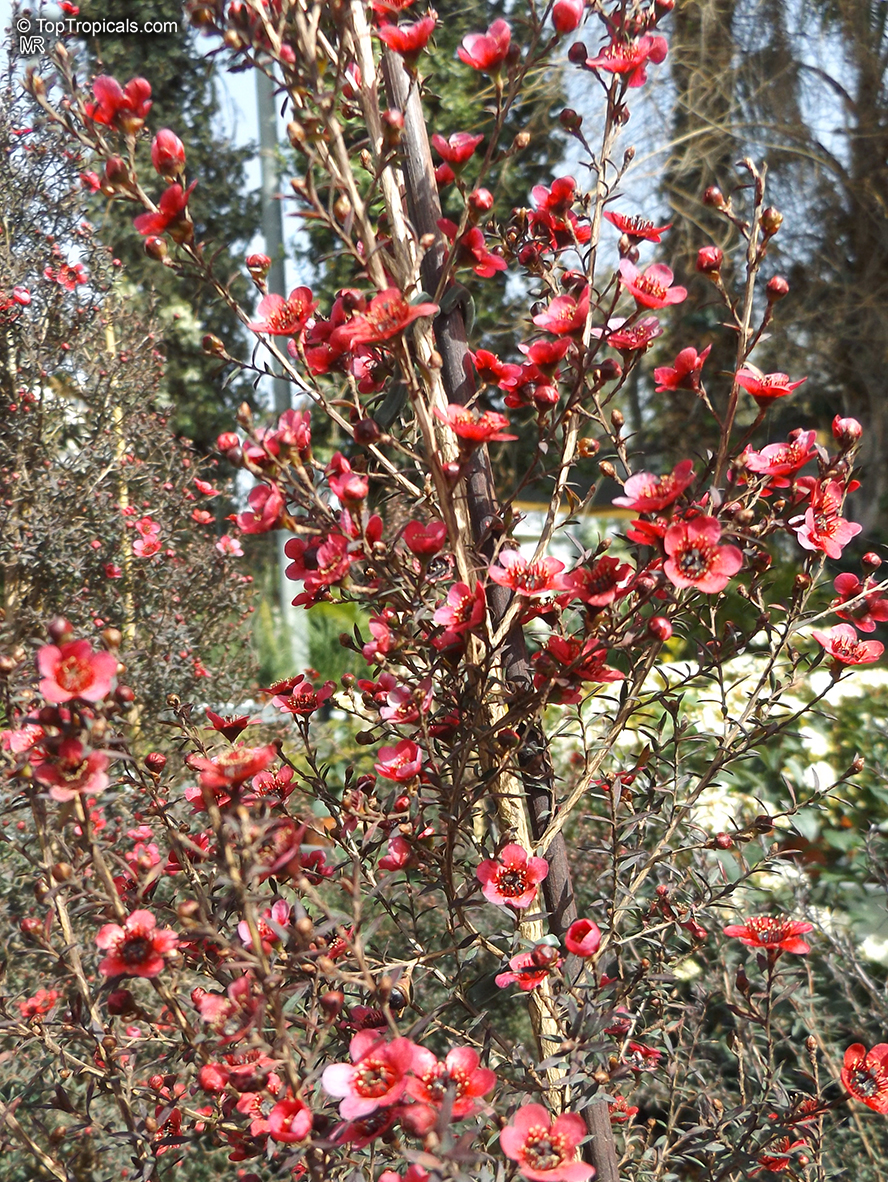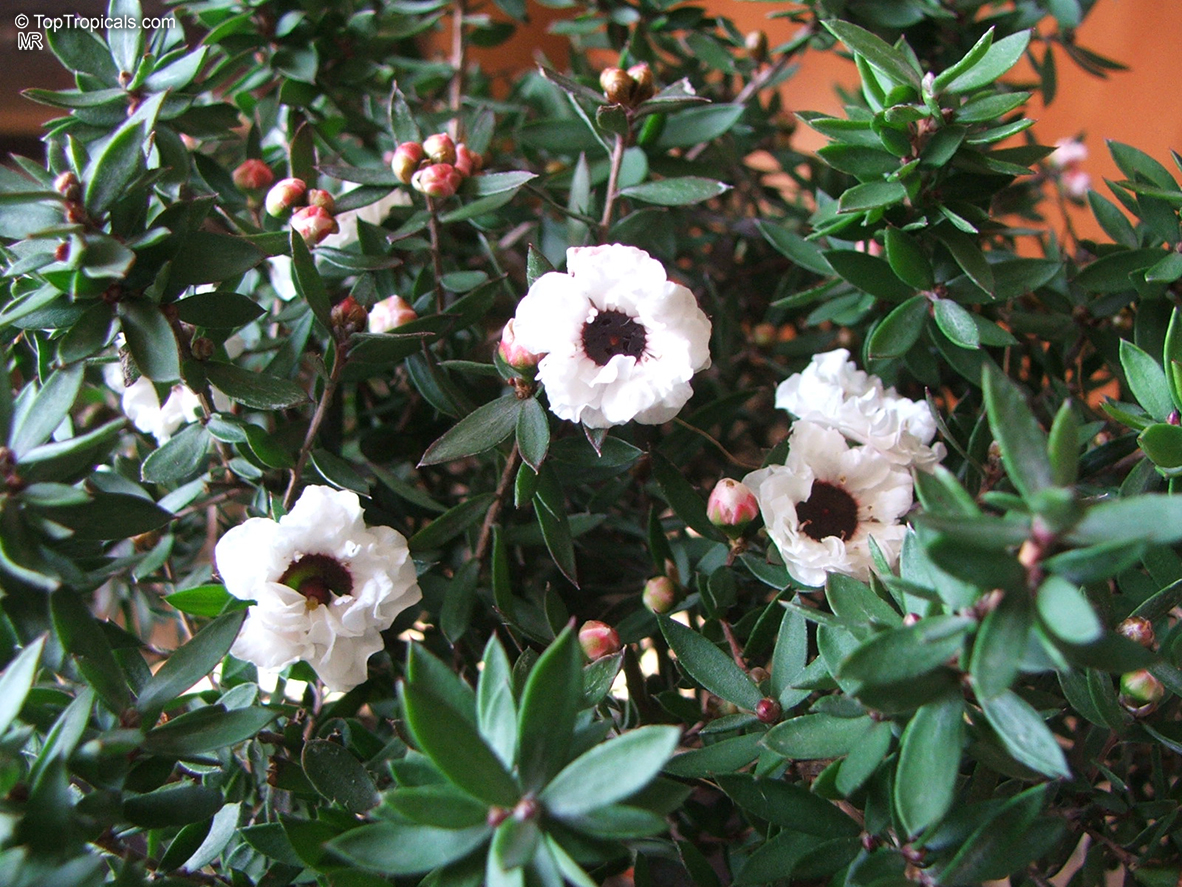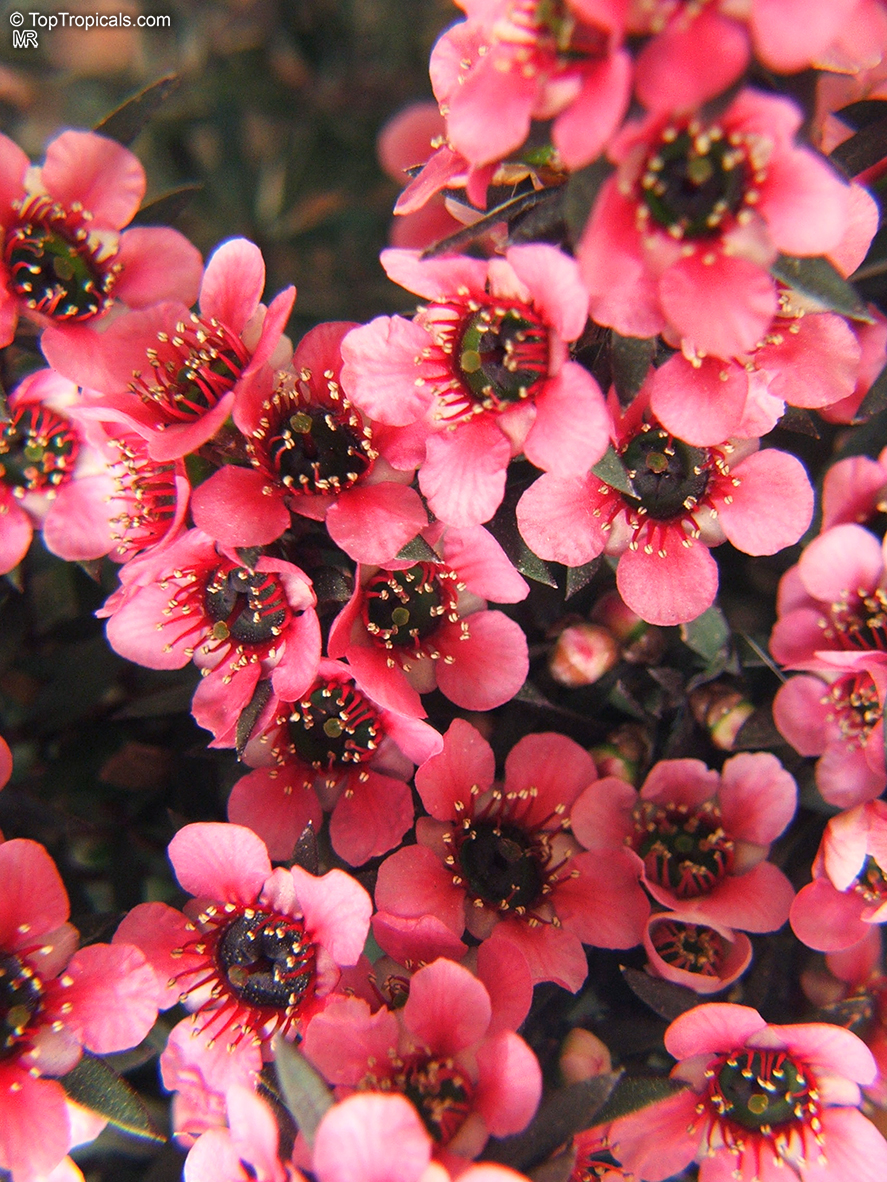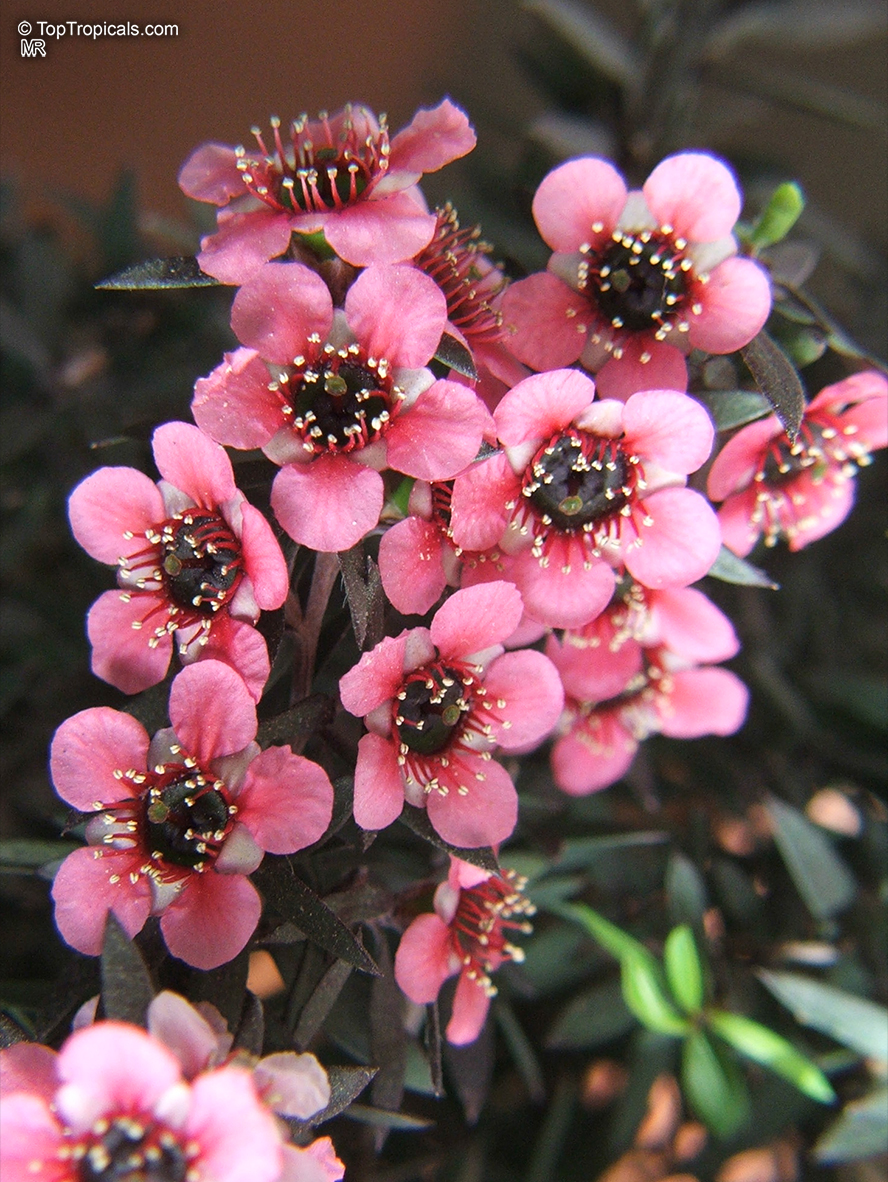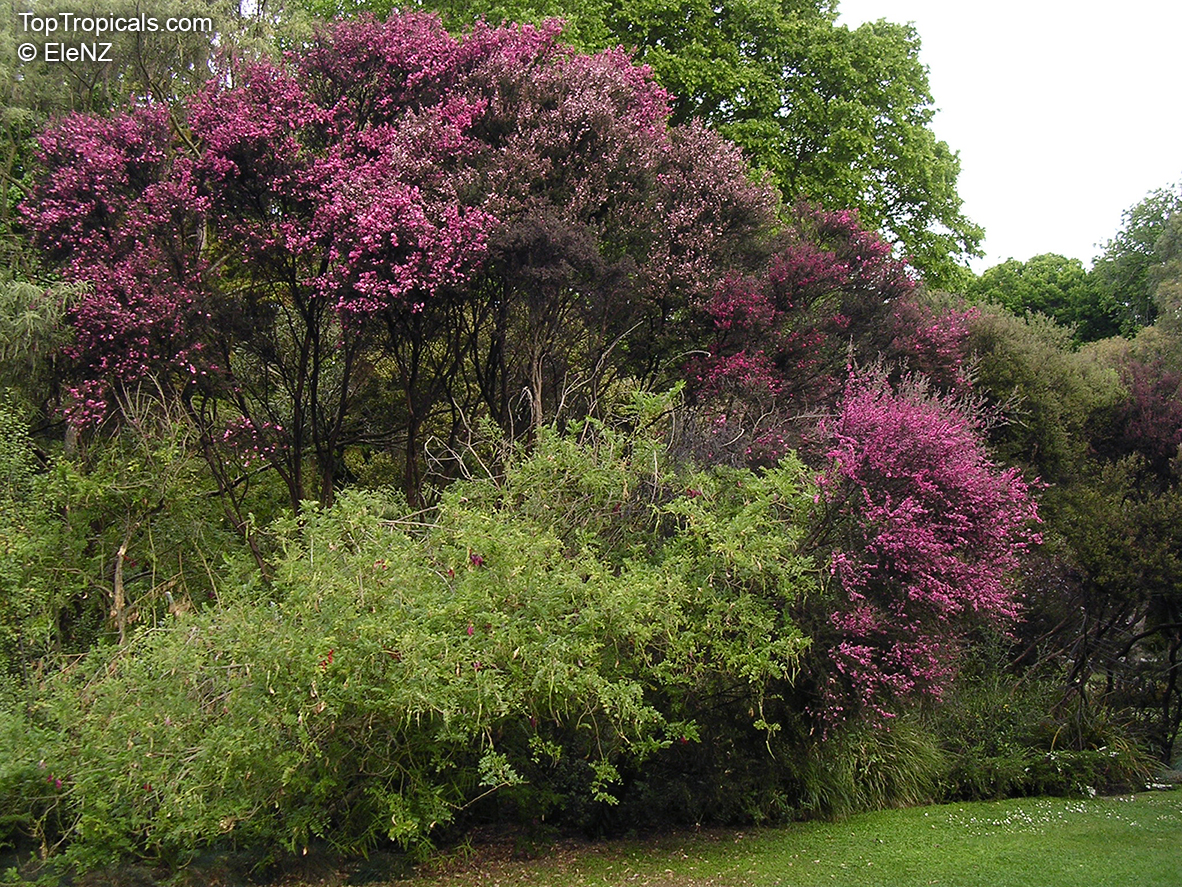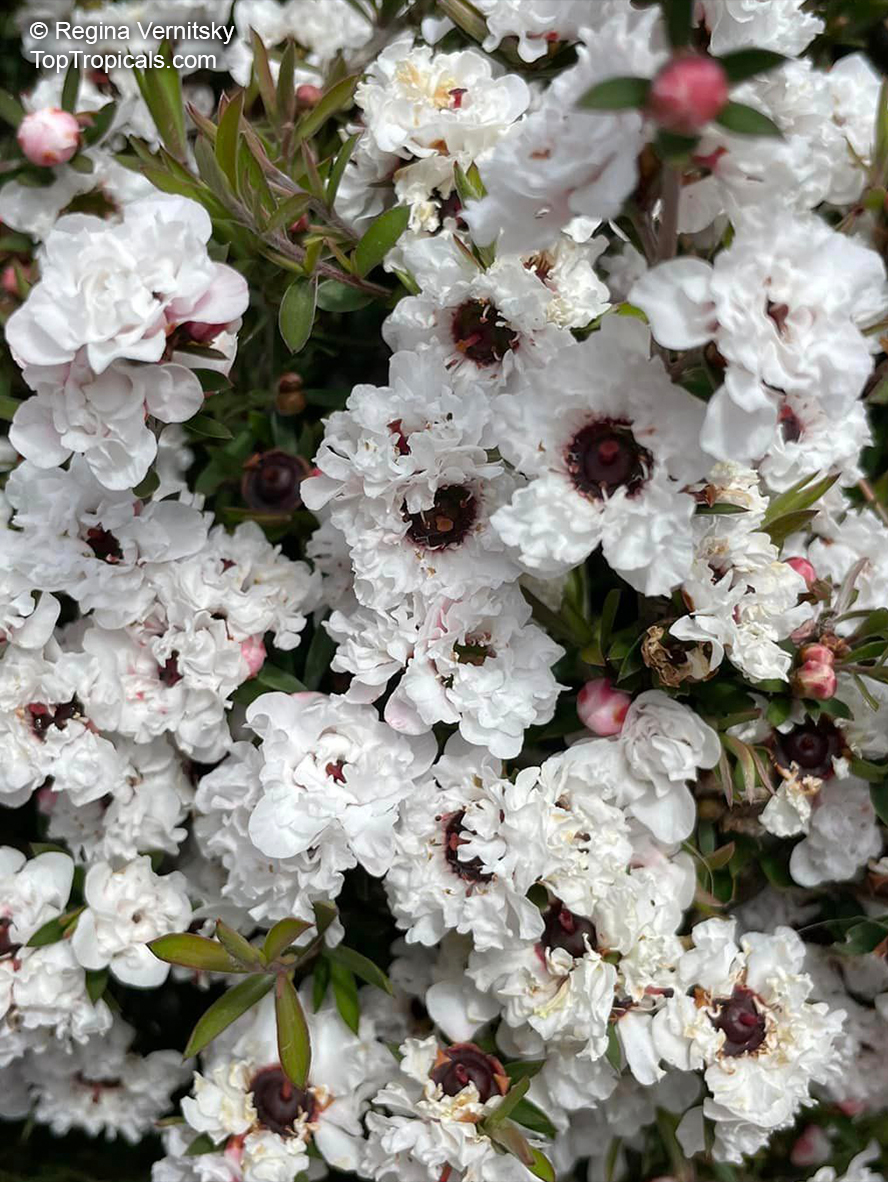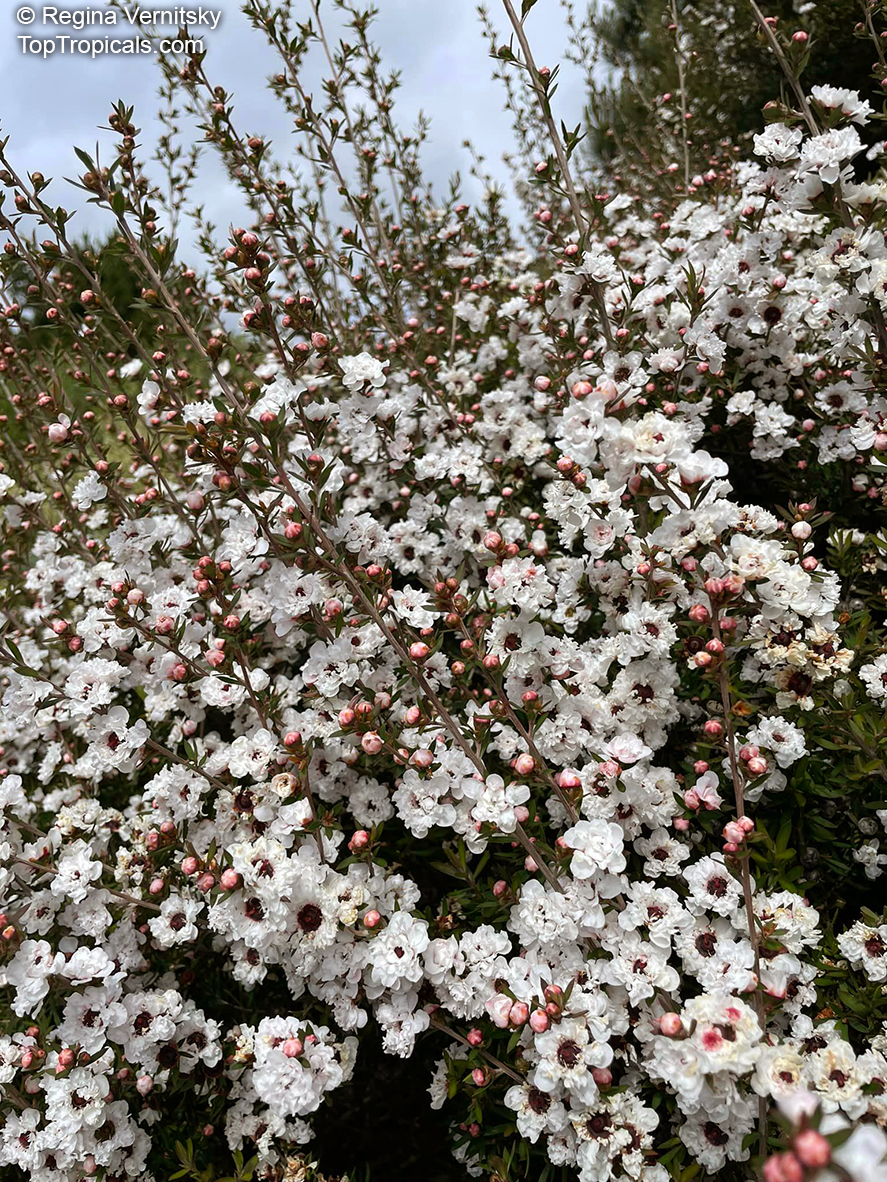Leptospermum scoparium (Manuka)
Top Tropicals Plant Encyclopedia
Botanical name: Leptospermum scoparium
Common names: Manuka, New Zealand Tea Tree
Family: Myrtaceae
Origin: Tasmania, New Zealand













Leptospermum is a lovely tree, with flowers which resemble tiny wild roses and spiky little evergreen leaves. It is distributed in Australia, New Zealand and South East Asia. This genus was first recognized by Johann Reinhold Forster in 1776, and comprises 86 species, 83 occurring in Australia, all but two endemic.
The common name of Tea Tree derives from the practice of early Australian settlers who soaked the leaves in boiling water to make a herbal tea rich in Vitamin C. It is said that Captain Cook brewed tea of Leptospermum leaves to prevent scurvy amongst his crews. The nectar from the flowers is harvested by bees; this is used to make Manuka honey which has strong antibacterial and anti-fungal properties.
Leptospermum makes a desirable garden plant, valued for its fine texture, pleasant citrus-like scent of foliage and attractive flowers. It is also great for container and bonsai culture.
In the ground, it can be planted as a single specimen tree or as several plants close together for a terrific wind-breaking thicket. Cultivation is pretty easy as most adapt well to a variety of soil types, preferring slightly acid. Give young trees plenty of water to establish deep roots - this enhances their natural drought tolerance in later years. Shape a single-trunk tree in its early years by cutting off any stems that sprout near the base. Look for the trunk to gnarl and grow "hair" in a few years - it's an outstanding feature of older trees.
When grown in container, Leptospermum requires a bit more attention. Lack of water is the easiest way to kill this plant: it won't wilt, but will go from healthy to dead in a matter of hours. Soil must be kept uniformly moist; the plant can tolerate poor drainage, however excessive water may cause root rot. Water when the soil dries slightly on the top. Leptospermum needs lots of light; if kept indoors, requires a very bright location. Tip pruning after flowering improves the vigor and tends to avoid the woody appearance.
Some species (for example, L. scoparium) are hardy to lover 20's; others are sensitive to frost. Leptospermum prefers it to be a bit cool in winter (below 55 degrees).
